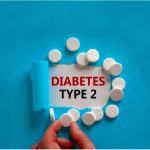In data released by GLOBOCAN 2020, stomach Cancer is the 5th biggest cancer in the world, with esophageal Cancer coming in at 7th in terms of incidence. Of the 9.9 million cancer deaths in 2020, 7.7% of these were from stomach cancer and 5.5% from esophageal cancer.
Epidemiology
In squamous cell carcinoma of the esophagus (ESCC), which is more prevalent in minority populations, there are several different histological subtypes:
1. Tobacco and alcohol (multiplicative)
2. Nutritional factors
3. Human papillomavirus (although this is diminishing with the HPV vaccine availability).
4. Rare conditions (e.g., Lye ingestion, Plummer-Vinson syndrome, tylosis, achalasia).
More common and rapidly increasing in the western world is adenocarcinoma of the esophagus/ gastro-esophageal junction (GEJ). This affects mostly white males, who have GERD (gastroesophageal reflux disease), with other epidemiology factors including heavy tobacco use, dysplasia, possible obesity, or Barrett’s esophagus.
Gastroesophageal adenocarcinoma (GEA) rates can be seen in the graph below. As you can see, as squamous cell and district gastric cancers have reduced, g-junction and distal esophageal adenocarcinoma numbers have increased dramatically.
Most patients with esophageal cancer present with advanced disease.
However, with a reduction in tobacco use over the last few decades, more intense screenings (like with Barrett’s esophagus), and the advent of new methods like PPIs (proton pump inhibitors) and RFA (radiofrequency ablation) we can detect and tackle these cancers earlier.
This new understanding of biomarkers, patient staging, CPS/MSS/MSI/PD-L1 scores, better use of multidisciplinary teams, and novel drug mechanisms, has led to more personalized treatment of advanced disease, as can be seen in the chart below:
The image below shows how molecularly heterogeneous gastroesophageal cancer (GEC) is:
At the top, squamous cell carcinoma of the esophagus (ESCC) almost looks and behaves the same genomically as head and neck cancer, with a degree of large masses that can cause extreme dysphasia, but not spreading diffusely throughout the GI tract.
The GEC nomenclature can be seen below:
Prognosis
Treatment
The algorithm below demonstrates a pathway of treatment for GEC that has been staged with endoscopic ultrasound. The goal is for curative intent. Patients are often categorized into surgical and non-surgical. Generally, when you have EAC you will follow a chemotherapy/radiation course, followed by surgery and then immunotherapy (nivolumab). If unfit, you will move onto definitive chemo-radiation (concurrent chemo + fractional radiation). If ESCC, non-surgical options have come to the fore.
In 2011, the CROSS trial showed the effect of preoperative chemotherapy in GEA and GEJ vs surgery alone.
Below, you can see the treatment modality and sequence for locally advanced disease, with a 10-15% increase in 5-year survival:
Even though most patients present at advanced stage, we can still sub-categorize them as below, with CPS, MSI, and HER2 status important:
The advent of immunotherapy
While targeted therapy does not have the ability to cure, immunotherapy does have, in some patients a curative element. When we talk about immunotherapy, we talk of the various ways of manipulating the immune system (both innate and adaptive) through medications or vaccines. If they can be stimulated to work against cancer, they can cure it.
However, the immune-oncology (IO) field is complex and overcrowded, with the number of IO agents already high and likely to double or triple in the next 10 years.
In 2020, the IO clinical trial landscape has grown to field numerous targets and strategies, with somatic mutations (tumor load) and MSI testing being strong predispositions to immunotherapy.
Nivolumab
In the Checkmate 577 study, nivolumab, a human immunoglobulin G4 (IgG4) monoclonal antibody that binds to the PD-1 receptor and blocks its interaction with PD-L1 and PD-L2 was placed against placebo in patients with STAGE II/III EC/GEJ, who already had neoadjuvant CRT and surgery.
The disease-free survival graph can be seen below, showing the benefit of this IO treatment.
In the hazard ratios below, it was noted patients with squamous cell carcinoma benefited more than the adenocarcinoma patients.
But across the board, whether lymph node negative or positive, there was a clear benefit with nivolumab, and indeed in April 2021, it was approved by the FDA for gastric cancer, GEJ and GEA.
Pembrolizumab
Keynote 590 attempted to find out the efficacy of the PD-1 inhibitor pembrolizumab (with 5-FU + cisplatin) vs placebo (with 5-FU + cisplatin) in first-line metastatic esophageal cancer.
Once more, the overall survival scores were strong in favor of the immunotherapy drug.
Again, squamous cell histology proved the more immunogenic cell type, hence more responsive to manipulations of the immune system than adenocarcinoma.
In measuring how much the tumor can shrink on the CT scan, below you can see response rates going up by 30% with chemotherapy alone vs 45% with pembrolizumab + chemotherapy.
Pembrolizumab was approved in May 2021.
Based on these 2 studies, immunotherapy has become the standard of care in all patients with frontline esophageal cancer, and soon maybe the same for gastric cancer. Determining factors will be CPS (>10), or if squamous cells.
Below you can see the side effects, which are similar to A.E’s with chemotherapy alone. These IO drugs are contraindicated in patients with strong auto-immune disease histories (e.g., ulcerative colitis).
In Keynote-181, pembrolizumab also did well in second-line metastatic EC (a disease with very poor survival rates), particularly in the squamous cell carcinoma segment.
The future of EC treatment
Keynote 975, pembrolizumab with definitive chemoradiation (dCRT). CRT is a standard of care for many patients who cannot undergo surgery (e.g., over the age of 75, where esophagectomy is difficult). The trial design below was made to see if dCRT is a viable and effective option.
In the SKYSCRAPER-07 trial, the second-line IO drugs tiragolumab (a monoclonal antibody designed to bind with TIGIT, a protein receptor on immune cells) + the PD1 inhibitor atezolizumab, after dCRT, was pitted against atezolizumab + placebo, and placebo alone.
Tubular GI
Perhaps the next step down the GI road is to determine what subgroups exist in tubular gastrointestinal cancers. Many molecular subtypes have therapeutic and prognostic implications, as we are seeing in other cancers, and definite actionable targets exist at varying proportions in the GI tract. We are now able to offer certain patients novel agents depending on the biomarkers listed in the graph below:
Utilizing liquid biopsies to capture DNA tissue invasively, new advances in IHC, FISH, and NGS panels, we are identifying more biomarkers, like TP53, ARID1A, CDH1, even FGFR2 is showing promise.
Indeed, plasma circulating tumor DNA is also showing promise ahead of NGS panels, so the field of biomarker targeted treatment will continue to excite.
It is clear new approaches are needed to overcome cancer cell resistance, we need to understand the biology better to identify new targets and which patients to treat, but with a strong multi-disciplinary awareness, combination therapies are the way forward and will revolutionize the field of esophageal cancers over the next 10 years.







